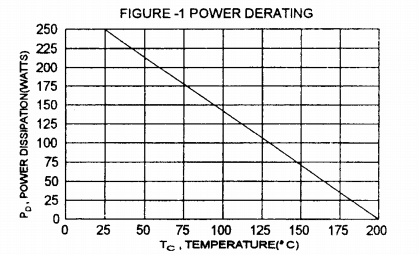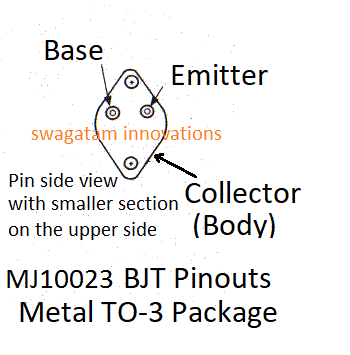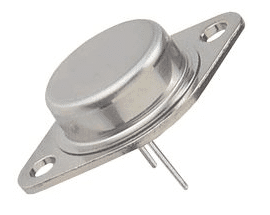
In this post we investigate the datasheet and technical specifications of a 400V, 40A (ampere) power Darlington transistor MJ10022 and MJ10023, and also learn the main features of the device.
We mostly find it difficult when it comes to finding a BJT with extreme voltage and current specifications such as with a 400V and 40 Amp limits.
Here's one such device which is rated with extreme V and I specs, yet it is easily accessible across local electronic markets. This power BJT could be applied in all DC high voltage and high current applications
This power transistor becomes even more special since it has an in-built Darlington feature ensuring maximum efficiency and high current gain, which allows the device to be switched with nominal input triggers and operate huge load using voltages upto 400V and current upto 40 amps.
Main Features
The BJT MJ10022 and MJ10023 are Darlington power transistors are designed to work with fast switching high voltage and high current inductive circuits in which the fall time are typically critical, such as in line operated SMPS topologies.
The main features of this device can be summarized as given below:
- High current and high voltage operations
- High speed switching
- Incorporates high-speed base-emitter diode
- Darlington high Gain output
- Designed for heavy duty Inductive loads.
Maximum Absolute Ratings
- Peak Collector-Emitter Voltage (Vcev) = 450V for MJ10022, and 600V for MJ10023
- Sustained Collector-Emitter Voltage = 350V for MJ10022, and 400V for MJ10023
- Maximum Emitter-Base Voltage (Vebo) = 8V
- Peak Collector Current Icm = 80A (ampere)
- Sustained Collector Current = 40A (ampere)
- Maximum Base Current (Ib) = 20A (ampere)
- Maximum Permissible Power Dissipation (Pd) = 250W (watts) at 25 degrees Celsius, and 143W (watts) at 100 degrees Celsius.
Thermal Dissipation Graph

Pinout Diagram of MJ10022, and MJ120023 (similar to any other TO3 package such as 2N3055)

Actual Image of the Discussed 400V 40A BJT MJ10022/MJ10023



With over 50,000 comments answered so far, this is the only electronics website dedicated to solving all your circuit-related problems. If you’re stuck on a circuit, please leave your question in the comment box, and I will try to solve it ASAP!